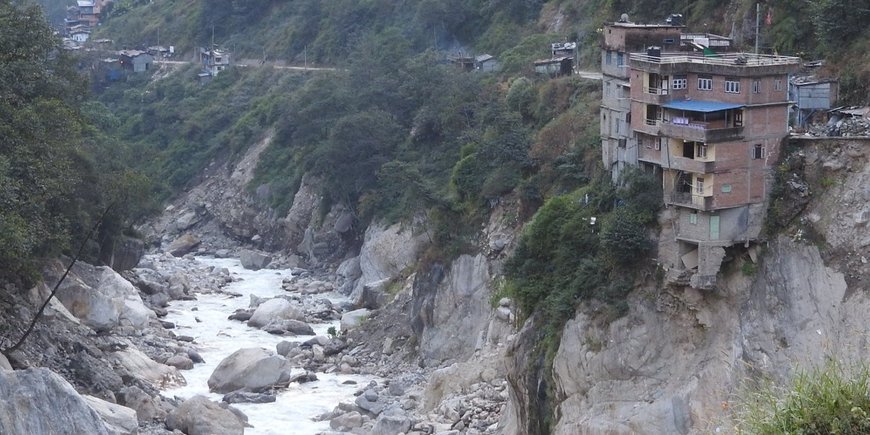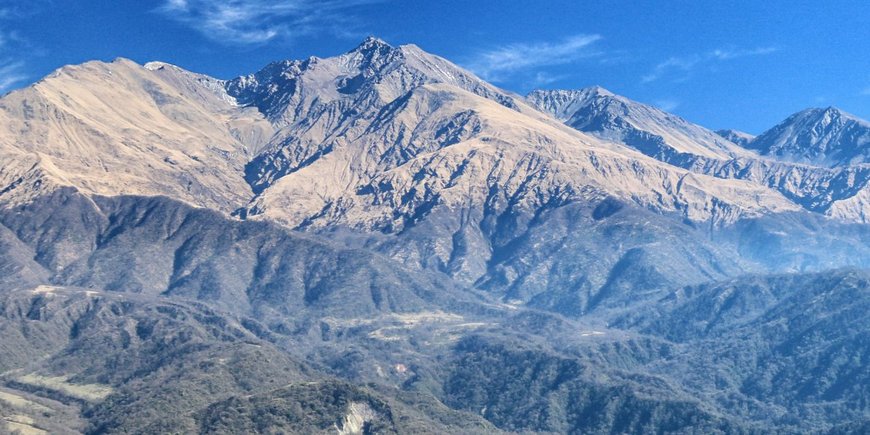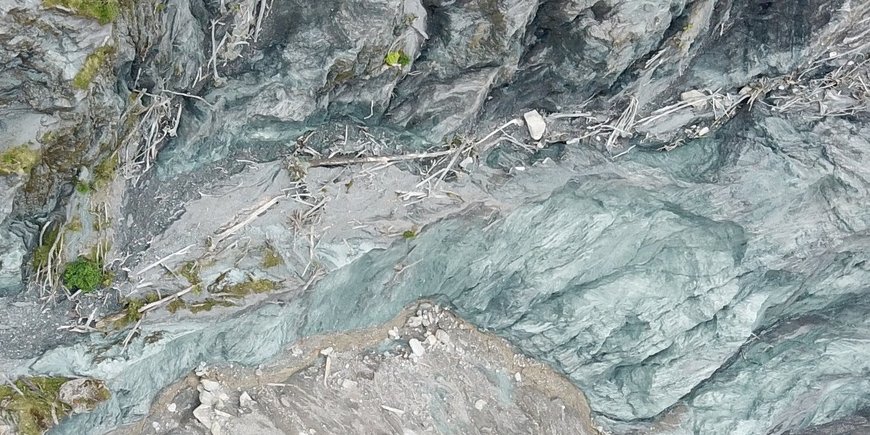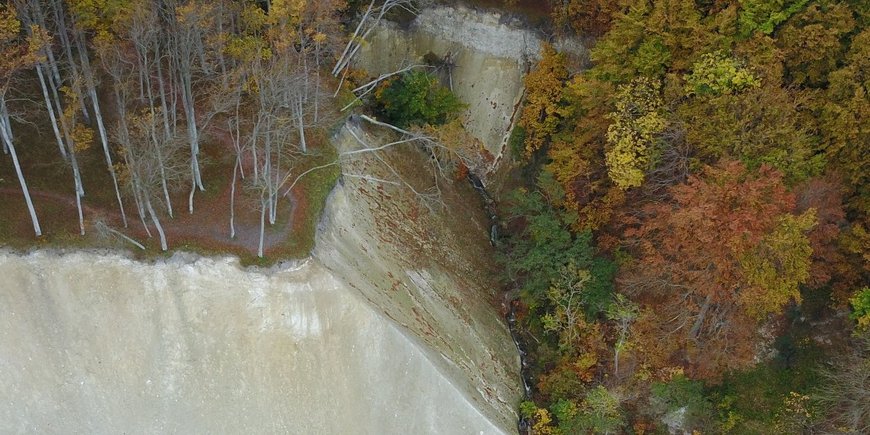Research topics and strategy
Because Earth surface dynamics depend on so many internal and external processes and their interactions, it is important to develop a holistic approach, pursuing geomorphology within a comprehensive, multi-disciplinary framework and with an eye on resolving all major processes on matching spatial and temporal scales. The research group does this with specific attention to five broad themes that encompass many of the challenges listed above. These themes are:
Principal aim: Identify and constrain the mechanisms by which surface processes influence the Earth’s Carbon Cycle.
Description: The erosion-aided geological draw down of CO2 is essential to the long-term relative stability of Earth’s climate that has permitted emergence of life and evolution of complex organisms. Moreover, burial of organic carbon sourced by erosion contributes to the formation of hydrocarbon deposits in predictable locations and quantities. We explore the natural pathways through which CO2 is exchanged between Earth’s atmosphere and geological repositories. Specific areas of emphasis include:
- weathering in surface and subsurface reservoirs,
- biological mediation of rock mass disintegration and weathering,
- transfer of organic carbon to soils,
- the role of soil erosion and landsliding,
- the delivery of organic carbon to geological depocenters, and
- the preservation of organic carbon in geological storage.
An explicit target of our research is to quantitatively constrain the carbon mass budget of active orogenic systems. We also work on the integration of dissolved inorganic and particulate organic carbon fluxes in numerical models of landscape dynamics in order to explore scenarios involving geomorphic, climatic or tectonic change over longer time scales.
Projects:
Principal aims: Constrain the links between geophysical processes such as earthquakes and the geomorphic processes they trigger and revolutionize monitoring of surface processes by application of seismological techniques.
Description: We have developed two major research efforts within this theme. The first focuses on seismically induced erosion, aiming to
- predict patterns of landslides triggered by earthquakes and models of seismic wave propagation;
- invert observed erosion patterns for insights into seismic processes; and
- constrain orogen mass balances on the time scales of entire seismic cycles.
The second focuses on development of a seismological approach to monitoring of geomorphological processes, and its application in studies of process mechanics and landscape evolution. This approach uses the acoustic signals of mass transport at the Earth’s surface to determine the location, timing, magnitude and nature of geomorphic process events. Unlike any other remote sensing technique, it’s high temporal resolution allows us to evaluate geomorphic activity in the context of meteorological conditions. Therefore, it is the key to understanding landscape response to climate change, as well as many other aspects of earth surface dynamics.
Projects:
Principal aim: Determine how climate (precipitation, temperature) and its variability govern the dynamics of Earth surface processes and affect the evolution of landscapes and human habitats.
Description: We use empirical observations and numerical modeling to better understand how surface processes influence hillslopes and river channels, modulate sediment transport, and ultimately shape landscapes. In areas of known climate forcing, we use erosional and depositional records to refine our understanding of the controls on erosion and sediment-transport dynamics, and develop predictive models for how landscapes will respond to changes in forcing. Therein, special attention is paid to the roles of temperature and temperature variations, climate-dependent biological and chemical processes, the periodicity of climate forcing, and tectonic/upper-mantle processes that can further influence landscape evolution.
Projects:
Principal aim: Determine how rapid climate change alters the eco-bio-geomorphic system of a landscape.
Description: We use terrestrial sedimentary archives, mainly lakes, and (organic) geochemical proxies to extract information about landscape and ecosystem change during periods of past abrupt climate change. We reconstruct change during past abrupt transitions in the climate system, such as glacial-interglacial transitions, past warm periods (MIS 5, MIS11) as well as determine the feedbacks of palaeohydrological change on biogeochemical fluxes. Special attention is paid to the role of hydrological change (precipitation intensity, source and ecosystem evapotranspiration) in triggering changes on the regional spatial scale. Further, we aim to identify how such changes have affected the evolution of human societies during the Holocene and into the Anthropocene.
Projects:
- STEEPclim
- Xinxin's project
- SECCO (EarthShape)

Principal aim: Develop tools and methods that allow for the observation and quantification of matter and solute fluxes on the Earth’s surface.
Description: We develop novel hard- and software tools that allow us to efficiently detect, sample and monitor matter and solute cycling through the atmosphere and the surface geosphere. Based on science-driven needs, our scientists and engineers develop laboratory devices, sampling devices for the field, autonomous monitoring stations and innovative software tools. Together with GFZ's Transfer and Innovation office, we amake these tools available to the scientific community and society through cooperation with administrative agencies (DWD, IAEA) and industrial partners.
Projects:
Although it is legitimate to develop focused research efforts targeted on these individual themes, there is unique value in their integration. Concepts, constraints, methods and approaches obtained within one theme are essential to addressing other themes effectively, with the potential for further links and feedbacks. As an example, seismic monitoring of geomorphological activity in upland catchments can give insights into the exact meteorological conditions that cause surface process events, enhance predictive understanding of landscape response to climate change, and allow natural hazard risk assessment and early warning. It will also underpin a detailed evaluation of the links between the physical, chemical and biological processes that drive geological draw down of CO2, when paired with downstream measurements of sediment and dissolved loads of rivers. This could give rise, amongst others, to rare insight into the role of geomorphological processes in ecosystem dynamics. The notion that this integration requires pursuit of multiple themes in tandem and the application of a range of techniques and approaches is central to the group’s research strategy.





